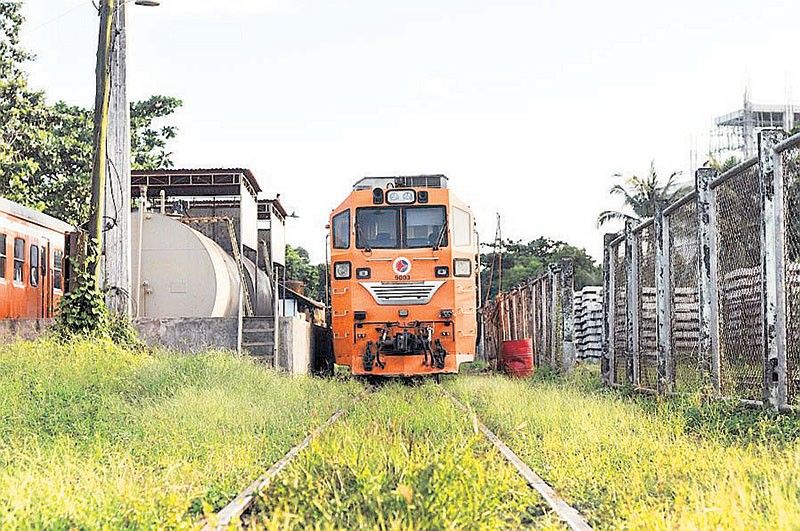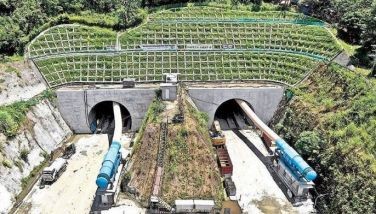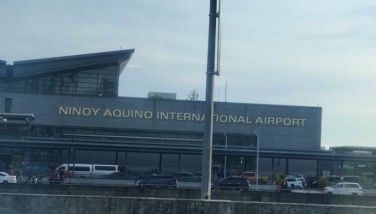Rural resurgence requires rail revival

For Bicol’s farm sector (Conclusion)
NAGA, Camarines Sur, Philippines — The train lets out a final horn, cracking the stillness of dawn – a long, howling one – before closing the doors of the passenger coaches behind. This is the first of just two trips from Naga to Legazpi City, Albay.
A minute goes by and the train sets off at exactly 4:30 in the morning.
As the train reaches the provincial capital Pili, the horizon reveals fields after fields of palay, the green seemingly unending, as far as the eye can see. In Bao, the fields surround the tracks that guide the train, but the backdrop is graced by the towering silhouette of Mount Asog.
This is the closest the fields and the train meet, side by side on this clanky line of the Philippine National Railways (PNR). Elsewhere across the world, tracks are used not only for the transport of people, but also for the movement of goods. Soon, this may be the case for Bicolano farmers, if the government lays concrete on a P5-billion plan to use railway for cargo.
The last time the PNR deployed a commuter service between Manila and Bicol, known as the Bicol Express, was more than a decade ago. Since then, the PNR has struggled to keep the Bicol Express running, as the tracks were washed out by typhoons that ripped through the archipelago from the eastern coast. Repair costs millions in taxpayers’ money. In 2014, the Bicol Express saw its last train ride.
In Manila, the PNR managed to sustain its passenger service between Alabang and Tutuban, while in Bicol, the agency operated select trips in Camarines Sur and Albay. The alignment from Manila to Bicol held on, but the tracks never met again. Several bridges and sections were too unstable to risk crossing.
The government had planned on securing a loan of P175 billion from China to rebuild the Bicol Express and call it PNR South Long Haul. This plan failed to push through, as China demanded an interest rate that was too costly for the Philippines. The PNR South Long Haul was supposed to offer passenger and freight trips from Manila to Bicol. Trains would pace up to 120 kilometers per hour, shortening travel time to just four hours, from 10 hours by road.
As the government looks for another financier for PNR South Long Haul, the PNR wants to wait for no one in its push to revive the Bicol Express. This time, it seeks to retrofit the alignment to the south of Luzon for cargo purposes. The plan, if pursued, could change the game for the close to 600,000 farmers in Bicol.
In March, the PNR stopped its commuter services between Alabang and Tutuban to give way for the civil works of the P873.62-billion North-South Commuter Railway.
Given this, the agency is left with a fleet of idle locomotives that can be transferred to surviving lines in Southern Tagalog and Bicol Region.
The PNR plans to assign some of these trains for freight transport between Calamba, Laguna and Legazpi.
Transportation Undersecretary Jeremy Regino told The STAR that the PNR would ask for P5 billion to pursue this project. He prays lawmakers would give it a chance, especially as it will benefit farmers.
The PNR will spend the bulk of the P5 billion in building a dry port in Calamba where containers can be lifted in and out of the freight trains. The agency would also have to acquire flat cars, the rolling stock with open decks used mainly for cargo carriage.
Initially, the PNR may run a single trip per day for the freight train, scheduling it in the evening to spare the commuter lines in Southern Tagalog and Bicol Region of any disruption. Regino said each trip can move the equivalent of 12 container vans. From Calamba, the loads can be brought to Manila by trucks, which can access the expressways for quicker delivery.
Currently, there is an absence in the toll network going to Bicol, leaving truckers with no choice but to take longer drives through service roads. The South Luzon Expressway is also the farthest tollway to the south of Luzon, but this is only up to Sto. Tomas in Batangas.
As such, farmers interviewed by The STAR said they spend as much as P30,000 to transport eight tons of produce from Bicol to Manila. A good trading day would return an income of P100,000, but half of it would go to funding the next cycle of planting. This means they gain only P20,000 in profit for several weeks of hard work.
Regino estimates that farmers can save at least 30 percent in freight costs from transporting their crops through rail. In essence, the P30,000 that farmers in Bicol pay for the transfer of produce to Manila could go down to as low as P21,000.
Moreover, railways use an exclusive alignment unlike highways and tollways, reducing delays to nearly zero by adhering to a fixed schedule. This can lead to better income for farmers and lower prices for consumers.
For Regino, this plan benefits everyone, making it worth trying.
Back on the train ride, PNR driver Jelson Celimen points to an unfinished structure to the right of the tracks in Camalig, Albay, the design resembling that of a station. Celimen confirmed it was intended to become the Camalig Station that would have laid the path all the way to Sorsogon.
Republic Act 6366, signed by Ferdinand Marcos Sr., ordered the construction of a new line to Sorsogon. However, the project failed to see the light of day, as Sorsogon back then was one of the strongholds of armed communists. The movement drew members from peasants who lost hope in state reforms and found light in the armed struggle.
As the train nears Daraga and closer to Mayon Volcano, Celimen – a PNR driver for more than 13 years – said the plan to use PNR for logistics would have benefitted Sorsogon, too, a province that produces coconuts and palay. He sighed, perhaps realizing it’s just wishful thinking.
Bicol Region may be connected to the nation’s capital Metro Manila by land, but their economies are far from meeting halfway.
Poverty incidence in Bicol remains high at 25.1 percent compared to the national rate of 16.4 percent, an irony, considering that the province is a food basket, supplying roughly around eight percent of certain vegetable needs of the rest of the country, such as eggplant, squash, stringbeans and ampalaya.
Infrawatch PH convenor Terry Ridon believes this should be reason enough for the government to explore fresh ways on how to help the region.
“The significant percentage share of logistics costs has always been a major concern in the prices of basic commodities. A cargo rail between ports and production facilities within Mega Manila should spur economic growth in the regions and allow for lower prices of goods,” Ridon told The STAR.
Regino, who heads the rail sector of the Department of Transportation, has a broader look on the economy. He said the government can never decongest the cities without rail development in the countryside. And by this, he means building railroads for both commuter and freight purposes.
In the US, the government recognizes the role played by rail in agriculture. Based on data from the US Department of Agriculture’s Agricultural Marketing Service, crops make up nine percent of commodities transported by rail, the fourth largest next to coal, chemicals and minerals.
In an infographic, the Association of American Railroads also outlined what a single rail car can carry: wheat for 258,000 loaves of bread, corn for lifetime feeding needs of 37,000 chickens and soybeans for 215,000 pounds of tofu.
The US also achieved its status as the world’s biggest grain exporter thanks to its rail network. Its trains are responsible for the movement of 750,000 carloads of grains yearly, loaded mostly from the American Midwest and brought to ports in shoreline states like California.
After three hours of journey, the train makes it to the Legazpi Station, successfully traversing a 101-kilometer stretch through two provinces in Bicol. Celimen rests his right arm on the window of the engine car, turning his head to check on the disembarking passengers. He waits until the last one gets off and maneuvers the train to reverse its position, ready for the trip back to Naga later at midday.
If things go as planned, Celimen may find himself assigned to steer the freight cars of PNR next year. That would be a longer journey though, setting off from Albay, passing through Camarines Sur, Camarines Norte, Quezon and ending in Laguna.
Development, similar to trains, stops for everyone, but it waits for no one. Whether the PNR can mount cargo trips by 2025 remains to be seen.
But the time is ticking, as farmers dream of cheaper ways to bring their produce to the market – and to the table.
- Latest
- Trending

























